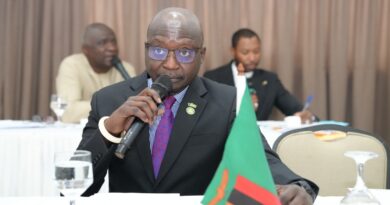ZiG Gains Traction, But Doubts Persist Over Zimbabwe’s Gold-Backed Currency
Zimbabwe’s central bank says its gold-backed currency, the Zimbabwe Gold (ZiG), is stable and fully backed by reserves, but skepticism persists amid a 20% premium on the parallel market and low public confidence rooted in decades of economic instability.
The Reserve Bank of Zimbabwe (RBZ) reported that the ZiG, introduced in April 2024, now accounts for 43% of domestic transactions—up from 26% a month earlier. Total reserves have reached $701 million, giving the currency more than 100% reserve cover, the bank said.
Despite these positive indicators, the RBZ opted to keep its benchmark interest rate unchanged at 35%, citing exchange rate stability among the key factors.
“ZiG is our national currency, and we are committed to ensuring its success by maintaining all the fundamental characteristics of sound money,” RBZ Governor John Mushayavanhu told Reuters. He emphasized that lessons from previous currency collapses had prompted tighter controls on money supply and a focus on monetary stability.
Still, trust in the ZiG remains low. Most Zimbabweans continue to rely on the US dollar for everyday transactions, fearing a repeat of the country’s past hyperinflation and currency failures. Black-market traders say the apparent stability is more about scarcity than confidence.
“There isn’t a lot of ZiG in the market,” said Pearson Tambudze, a Harare-based trader. “That’s why the rate is stable, not because people believe in it.”
The International Monetary Fund (IMF) has acknowledged the initial stability of the ZiG but warned that broader reforms are necessary. The IMF is urging Zimbabwe to adopt stricter limits on money growth, improve transparency in the foreign exchange market, and address the nation’s $12.2 billion in external arrears.
Finance Minister Mthuli Ncube expressed optimism that the ZiG’s stability, combined with prudent monetary policy, could help Zimbabwe secure $2.6 billion in bridge financing by mid-2026.
However, international investors remain wary. “We wouldn’t invest in Zimbabwe at the current stages,” said Jetro Siekkinen of LGT Capital Partners. “The country needs more structural development.”
Economists also question Zimbabwe’s limited reserve cushion—just 0.8 months of import cover, far below the IMF’s recommended three months. “Clearing arrears with multilateral creditors should be the top priority,” said Lyle Begbie of Oxford Economics.
Begbie cautioned that Zimbabwe is still years away from accessing IMF concessional funding, even if reforms succeed. He cited two failed IMF staff-monitored programs as indicators of how fragile progress remains.



